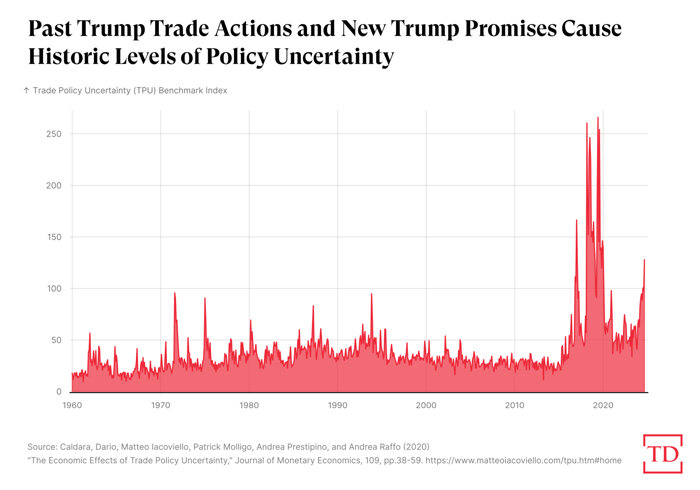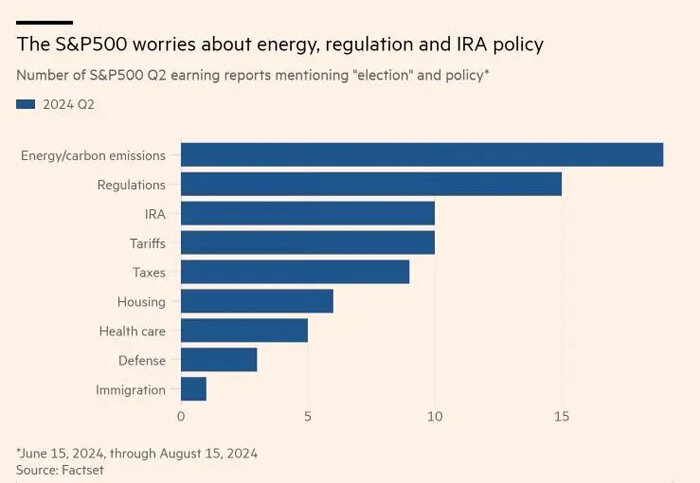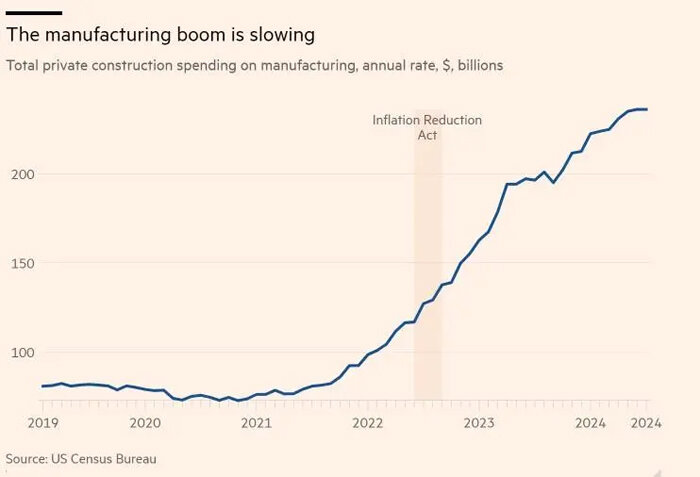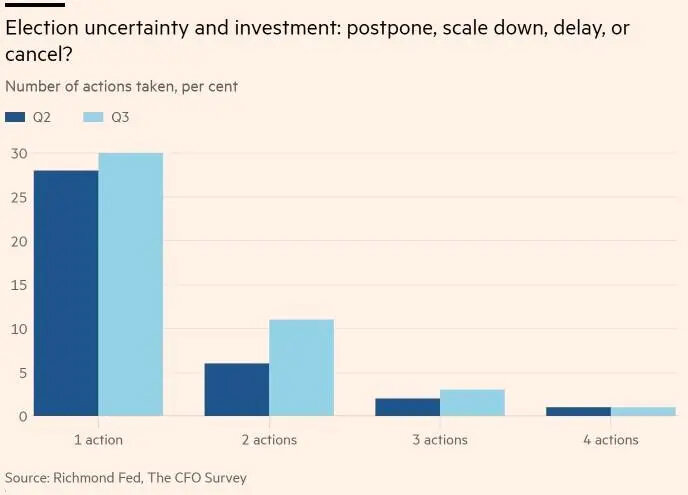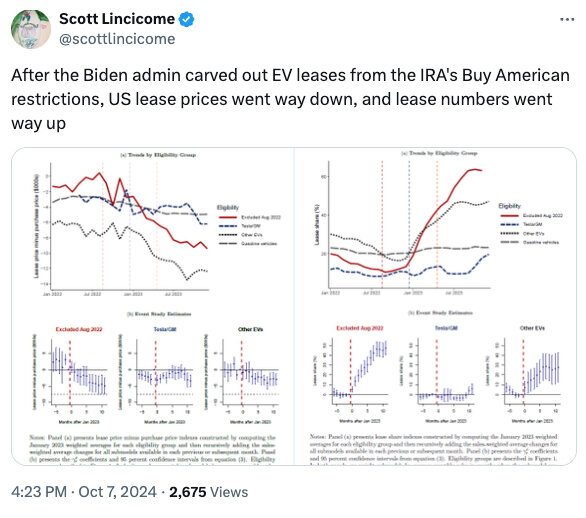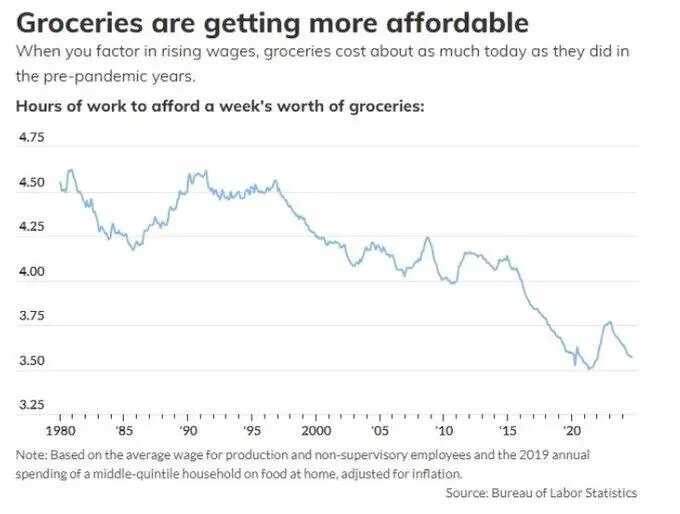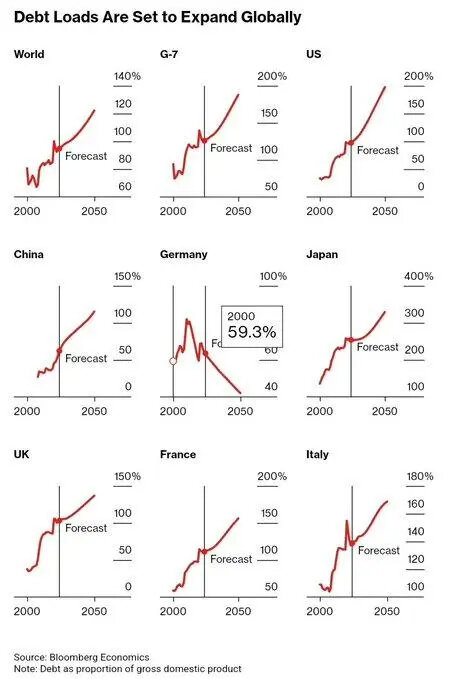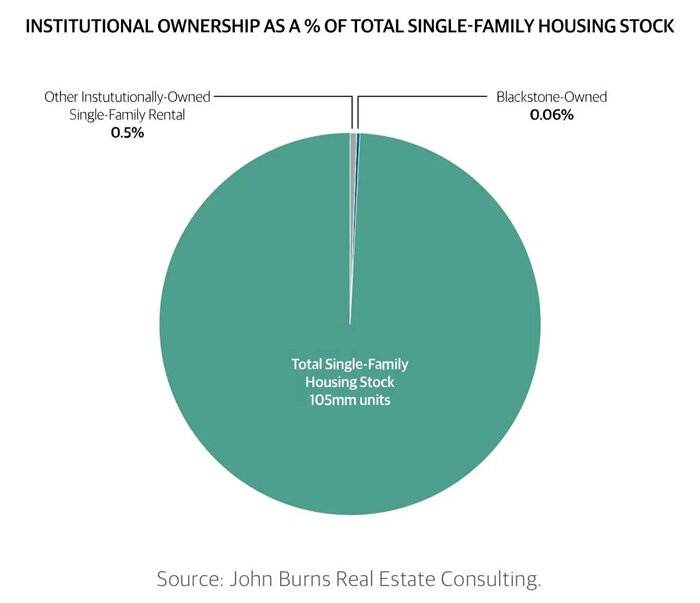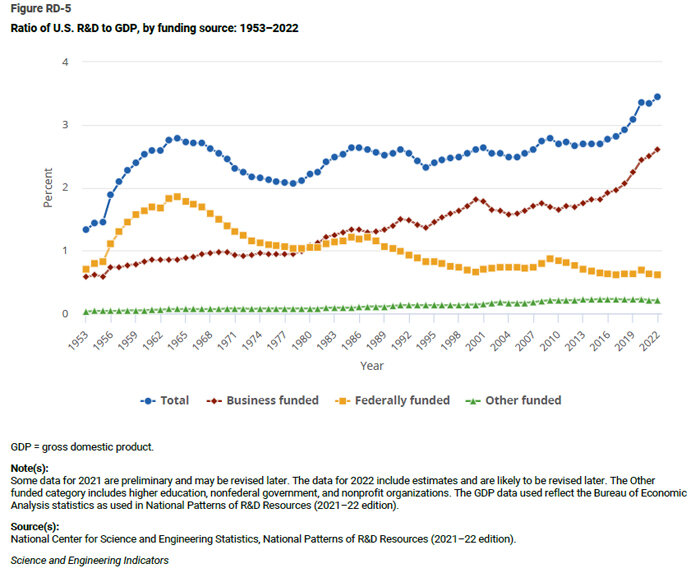Economic Policy Uncertainty Matters. A Lot.
Reams of economics literature show a strong connection between the unpredictability of government economic policy—aka “economic policy uncertainty” or EPU—and corporate investment and activity in the United States. Studies have found, for example, that higher EPU causes firms to reduce short-term, long-term, and total investments. Negative effects are particularly pronounced for small businesses, bank credit supply, and in the manufacturing sector, and they can occur at the federal and sub-federal level. In one particularly interesting paper, state-level manufacturing investment was found to remain depressed after gubernatorial elections, as companies faced with pre-election EPU in one state shifted their investments to neighboring states with more stable and predictable policies.
One of the most widely cited and relevant studies on EPU, by economists Scott Baker, Nick Bloom, and Steven Davis, develops an EPU index based on thousands of newspaper articles and reveals that EPU spiked during not just major shocks like the Gulf wars or failure of Lehman Brothers, but also tight presidential elections when the future of monetary, tax, fiscal, trade, and other federal policies set, implemented or influenced by the executive branch could change dramatically depending on who wins. The authors further found that EPU, at the firm level, increases stock price volatility and reduces investment and employment in “policy-sensitive sectors like defense, healthcare, and infrastructure construction,” and, at the economy-wide level, foreshadows declines in U.S. investment, output, and employment. They’ve since updated the index to include other measures of uncertainty, as well as sub-indices for specific economic policy areas (trade, monetary policy, climate) and countries.
